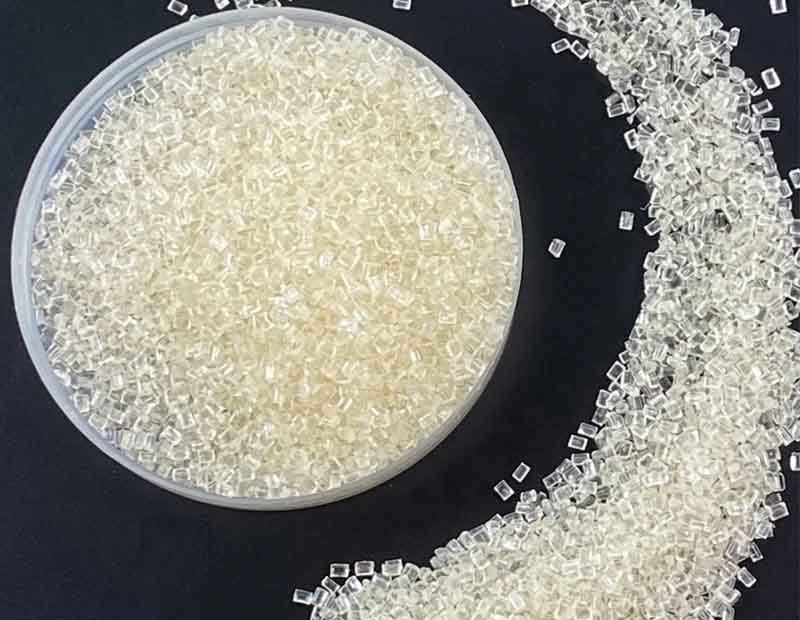Polysulfone (PSU) is a High-performance thermoplastic renowned for its exceptional resistance to high temperatures, chemicals, and mechanical stress. Commonly used across various industries, PSU can be processed using several methods, with injection molding, extrusion, and thermoforming being among the most popular. This article explores these processing techniques, highlighting each method's advantages and challenges to help manufacturers optimize product quality and efficiency.

1. Injection Molding
Process Overview:
Injection molding involves heating PSU until it melts and then injecting it into a mold, where it cools and solidifies. This method is ideal for producing small, precision components with complex shaPES, such as parts for medical devices and electrical insulators.
Advantages:
High Precision: Injection molding allows for tight tolerances, making it suitable for industries that require strict dimensional control.
Automation-Friendly: This process is compatible with automated systems, increasing production efficiency in large-scale operations.
Consistency: Each product is highly consistent, making injection molding well-suited for mass production.
Challenges and Tips:
High Temperature Requirements: PSU melts at a high temperature, typically between 340°C and 380°C, which necessitates specialized equipment capable of handling these conditions.
Slow Cooling Rate: PSU has a slower cooling rate, so controlling cooling times carefully is essential to prevent warping.
Shrinkage Control: PSU has a high coefficient of thermal expansion, which can lead to shrinkage during cooling. Proper mold design and controlled cooling rates are necessary to minimize size deviations.
Production Suggestions:
To enhance product quality in PSU injection molding, use mold temperature control systems to ensure even cooling. Additionally, control injection pressure and speed to achieve a smooth surface finish and accurate dimensions.
2. Extrusion
Process Overview:
Extrusion is commonly used to produce PSU in continuous forms, such as tubes, films, and rods. The process involves melting PSU pellets and forcing the molten material through a die, creating a continuous shape.
Advantages:
Continuous Production: Extrusion is highly efficient and ideal for high-volume, continuous manufacturing.
Minimal Waste: The process precisely controls the amount of material used, reducing waste.
Versatility: PSU extrusion is suitable for a wide range of applications, such as pipes and filter membranes that require chemical and thermal resistance.
Challenges and Tips:
Screw Design: Due to PSU’s high melt viscosity, specialized screws and barrels are needed to ensure even melting and flow.
Temperature Management: PSU is prone to degradation if overheated, so precise temperature control is critical.
Surface Quality: Inconsistent temperature or pressure can cause surface defects, such as roughness or air bubbles.
Production Suggestions:
Ensure proper temperature zoning within the extruder, with preheating, melting, and homogenizing sections. Maintain consistent extrusion pressure to improve surface quality and structural integrity.
3. Thermoforming
Process Overview:
Thermoforming involves heating a PSU sheet until it softens and then shaping it over a mold. This process is suitable for producing large parts with more flexible shapes, such as trays, medical device housings, and industrial enclosures.
Advantages:
Lower Tooling Costs: Compared to injection molding, thermoforming requires simpler molds, making it a cost-effective option for low-volume production.
High Flexibility: Thermoforming is ideal for creating large and complex shapes that would be difficult to achieve with other methods.
Rapid Prototyping: Thermoforming is suitable for quickly developing prototypes and small production runs, reducing time-to-market.
Challenges and Tips:
Thickness Control: Achieving uniform thickness can be challenging, especially with complex shapes, which may impact the final part’s strength.
Thermal Stress Management: Rapid heating and cooling may introduce thermal stress, potentially causing warping or cracking.
Surface Quality: PSU can deform under high heat, so careful control of heating and cooling is essential to ensure a smooth surface.
Production Suggestions:
Apply even pressure during heating to prevent thickness variations, and use gradual cooling to minimize thermal stress. These steps improve the stability and structural integrity of the final product.
Each of these three processing methods—injection molding, extrusion, and thermoforming—offers unique benefits for Polysulfone (PSU) manufacturing. However, PSU’s high melting point, viscosity, and cooling characteristics also present specific challenges. By implementing effective process control and optimization techniques, manufacturers can fully leverage PSU’s performance advantages and improve overall processing quality and efficiency.






